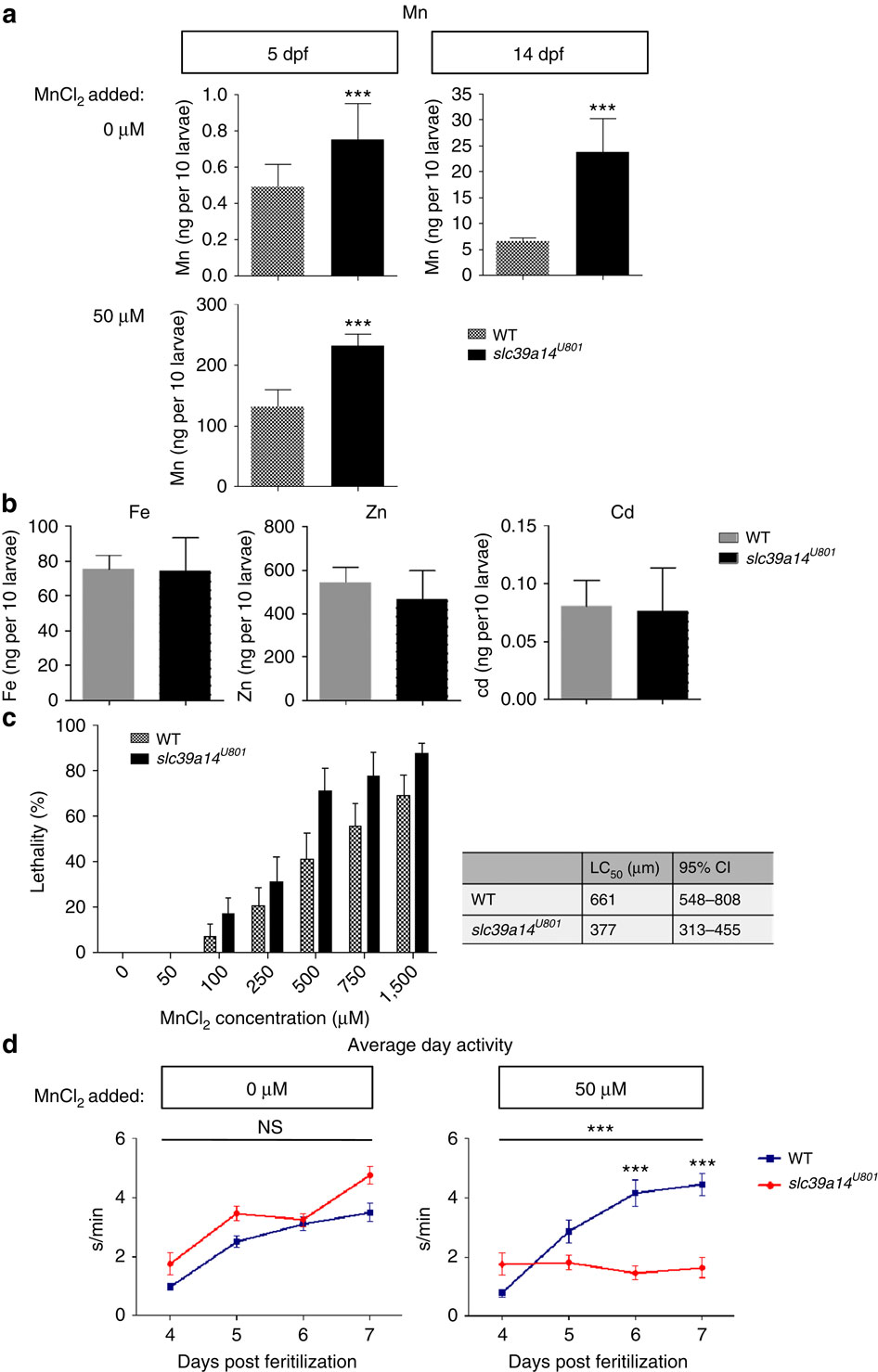Fig. 6 Loss of slc39a14 function in zebrafish leads to increased Mn accumulation and sensitivity as well as impaired locomotor behaviour. (a) Mn levels assessed in homozygous slc39a14U801 and wild-type (WT) larvae show that mutant larvae have significantly raised Mn levels at 5 dpf (P=0.001) and 14 dpf (P=0.0002), and Mn accumulation on MnCl2 exposure (50μM from 2 dpf) is significantly higher in mutant compared with WT larvae (P=0.000) at 5 dpf. Measurements were taken from pools of 10 larvae. Data are presented as means±s.d. from a minimum of five independent experiments. Statistical analysis was performed using Student’s two-tailed t-test (***P<0.001). (b) Graph showing Fe, Zn and Cd levels in 14 dpf mutant and WT larvae. Levels of all three metals are not significantly different between the two groups (P=0.906 [Fe], P=0.257 [Zn], P=0.834 [Cd]). Measurements were taken from pools of 10 larvae. Data are presented as means±s.d. from five independent experiments. Statistical analysis was performed using Student’s two-tailed t-test (NS, not significant). (c) Graph presenting the lethality in homozygous slc39a14U801 and WT larvae at 5 dpf on MnCl2 exposure between 2 and 5 dpf. Median lethal concentration (LC50) of MnCl2 determined by Probit regression analysis was 661μM for WT (95% confidence interval (CI) 548-808 μM) and 377 μM (95% CI 313-455 μM) for mutant fish. Data are presented as means±s.e.m. from nine independent experiments. (d) Locomotor behaviour studies of homozygous slc39a14U801 and WT larvae show that in unexposed conditions there is no significant difference in locomotor activity; and on MnCl2 exposure, locomotor activity is markedly reduced in mutant larvae compared with WT. The locomotor behaviour was tracked during 4 and 7 dpf using automated analysis software. s/min, movement in seconds per minute. Data are presented as means±s.e.m. 12 larvae were analysed per condition. Statistical analysis was performed using two way ANOVA (i, P=0.18; ii, P=0.000) (***P<0.001; NS, not significant). ANOVA, analysis of variance.
Image
Figure Caption
Figure Data
Acknowledgments
This image is the copyrighted work of the attributed author or publisher, and
ZFIN has permission only to display this image to its users.
Additional permissions should be obtained from the applicable author or publisher of the image.
Full text @ Nat. Commun.

